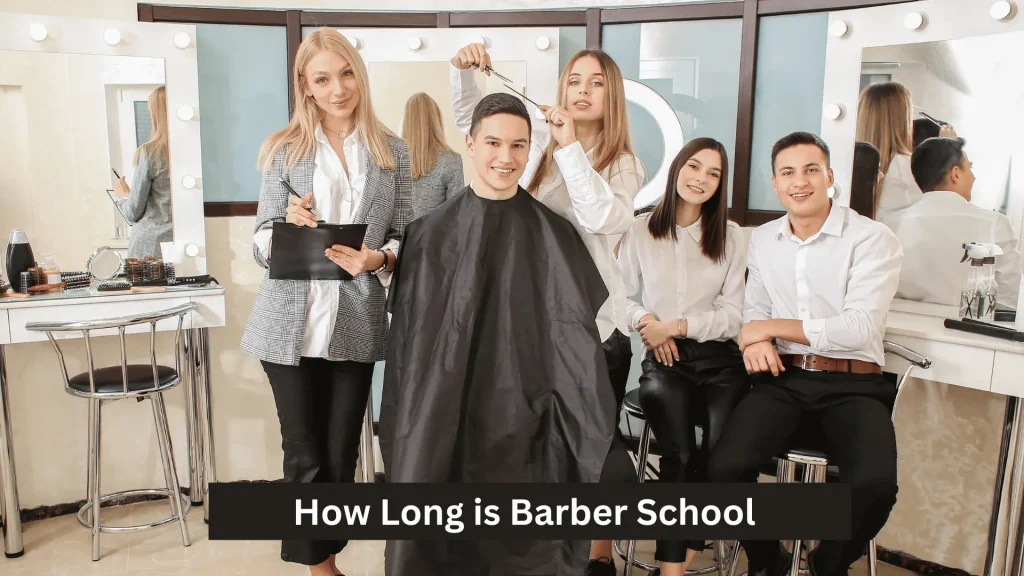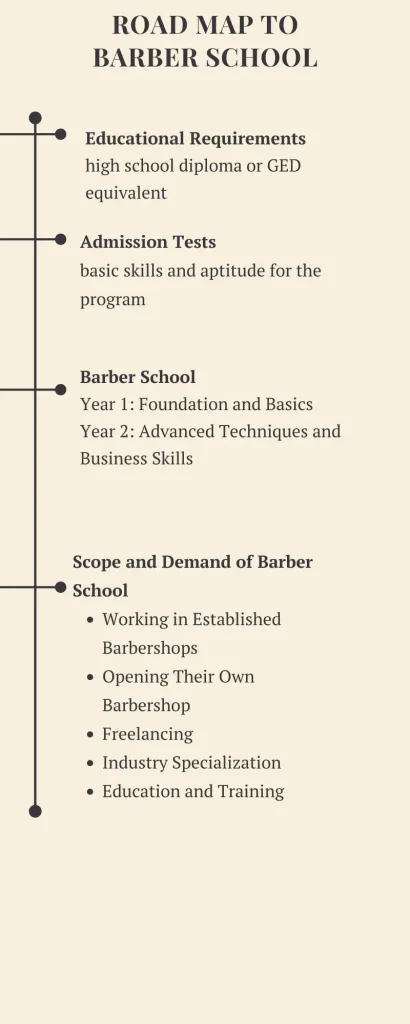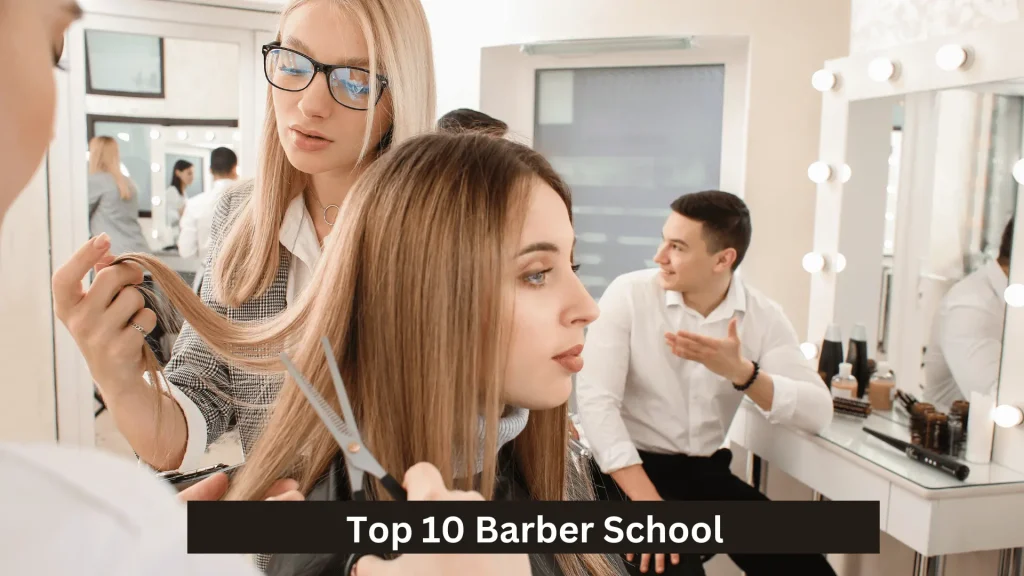How Long is Barber School
Are you considering a career in barbering and wondering, “How long is barber school?” You’re not alone. Many aspiring barbers want to know the duration and details of barber school before committing. In this guide, we’ll explore what barber school entails, how long it takes, and the steps to enter this rewarding profession.
What is Barber School?
Barber school is a specialized institution where students learn the art and science of barbering. This includes hair cutting, styling, shaving, and grooming techniques. The curriculum is designed to equip students with the skills needed to pass state licensing exams and succeed in the barbering industry.

In addition to practical skills, barber schools often cover business management and customer service to prepare students for all aspects of running a barbershop.
How Long is Barber School?
The duration of barber school can vary depending on the program and the state requirements. Here’s a breakdown of the typical time frame for an undergraduate program in barbering:
Year 1: Foundation and Basics
Course Duration: Approximately 6-8 months
Subjects Covered:
Introduction to Barbering: History, ethics, and industry overview
Haircutting Techniques: Basic and advanced styles
Hair and Scalp Care: Understanding hair types, scalp conditions, and treatments
Sanitation and Sterilization: Health and safety standards
Customer Service Skills: Effective communication and client management
Year 2: Advanced Techniques and Business Skills
Course Duration: Approximately 6-8 months
Subjects Covered:
Advanced Barbering Techniques: Precision cutting, razor work, and modern styles
Shaving and Beard Grooming: Techniques for facial hair maintenance
Chemical Services: Coloring, perming, and relaxing hair
Shop Management: Business operations, marketing, and financial planning
State Board Preparation: Review and practice exams for licensure

How to Enter Barber School
Entering barber school involves several steps, including meeting educational requirements, passing entry tests, and understanding the application process and financial aids available.
Educational Requirements
Most barber schools require a high school diploma or GED equivalent. Some schools may have specific prerequisites, so it’s essential to check with the institution you’re interested in.
Entry Tests
Some barber schools may require applicants to take an entry test to assess their basic skills and aptitude for the program. These tests often cover general knowledge, math, and reading comprehension.
Application Process
The application process typically involves filling out an application form, submitting transcripts, and possibly attending an interview. Here are the general steps:
- Research Schools: Look for accredited barber schools that meet your needs.
- Application Form: Complete and submit the application form, either online or in person.
- Submit Transcripts: Provide high school or GED transcripts.
- Interview: Attend an interview if required by the school.
- Acceptance: Wait for the acceptance letter and prepare for enrollment.
Financial Aids
Many barber schools offer financial aid options to help students cover tuition costs. Here are some common financial aids:
Federal Student Aid: Apply for FAFSA to determine eligibility for grants, loans, and work-study programs.
Scholarships: Look for scholarships offered by barber schools, professional organizations, and community groups.
Payment Plans: Some schools offer flexible payment plans to spread out the cost of tuition.
Veteran Benefits: If you’re a veteran, check if you qualify for educational benefits through the GI Bill.
Scope and Demand of Barber School
The barbering profession has experienced a renaissance in recent years, fueled by the growing popularity of grooming and self-care among men. This trend has led to a substantial increase in the demand for skilled barbers, making it a promising career choice for many. Here are some key aspects of the scope and demand for barber school graduates:
Working in Established Barbershops: Many barbers start their careers in well-known barbershops, gaining experience and building a client base.
Opening Their Own Barbershop: Entrepreneurial barbers may choose to open their own businesses, offering a unique blend of services and creating their brand.
Freelancing: Some barbers prefer the flexibility of freelancing, providing services at clients’ homes or special events.
Industry Specializations: Opportunities also exist in niche areas such as mobile barbering, celebrity grooming, and fashion industry collaborations.
Education and Training: Experienced barbers can become instructors at barber schools, sharing their knowledge with the next generation.
Top 10 Barber Schools
Choosing the right barber school is crucial for your career. Here are ten of the top barber schools globally, known for their comprehensive courses and high standards:

London School of Barbering, UK
Courses: NVQ Level 2 and 3 Barbering, Fast Track Barbering Course
American Barber Institute, USA
Courses: Barbering License Program, Master Barbering
Australian Institute of Barbering, Australia
Courses: Certificate III in Barbering
British Barber Academy, UK
Courses: Intensive Barbering Courses, Advanced Barbering Techniques
Schorem Barber Academy, Netherlands
Courses: Classic Barbering Course, Advanced Barbering
Barber Academy of Canada, Canada
Courses: Barber Diploma Program, Advanced Cutting Techniques
Men’s Grooming Academy, USA
Courses: Barbering Apprenticeship Program, Master’s Barber Course
SB Barbering Academy, South Africa
Courses: Diploma in Barbering, Advanced Barbering
Tokyo Barber School, Japan
Courses: Japanese Barbering Techniques, Modern Styles and Trends
Barber School of Warsaw, Poland
Courses: Professional Barbering, Creative Cutting Techniques
Factors Affecting the Length of Barber School
The length of time it takes to complete barber school can vary based on several factors:
State or Country Requirements: Different regions have varying hour requirements for licensure.
Program Type: Full-time vs. part-time programs can impact duration.
Curriculum: Some schools offer more comprehensive training, extending the program length.
Student’s Pace: Individual learning speed and attendance can affect completion time.
School Schedule: Frequency and timing of classes (day, evening, weekend) influence duration.
Prior Experience: Students with previous experience or credits may complete the program faster.
Final Verdict
So, how long is barber school? The duration varies widely depending on several factors, but typically ranges from 12 to 24 months for a comprehensive program. Choosing the right school and understanding the requirements can help you embark on a successful career in barbering. Whether you’re aiming to become a master barber or start your own barbershop, the investment in your education is the first step towards a rewarding profession.
FAQs
1. How many hours are required to complete barber school?
Most barber schools require between 1,000 to 1,500 hours of training, depending on state or country regulations.
2. Can I attend barber school part-time?
Yes, many schools offer part-time programs to accommodate students’ schedules, although this may extend the duration of the program.
3. Do barber schools offer job placement assistance?
Many barber schools provide job placement services, including resume assistance and connections with local barbershops.
4. What are the costs associated with barber school?
Tuition costs can vary widely, typically ranging from $5,000 to $20,000, depending on the school’s location, reputation, and length of the program.
5. Is financial aid available for barber school?
Yes, financial aid options such as federal student aid, scholarships, and payment plans are often available to help cover the costs of barber school.
